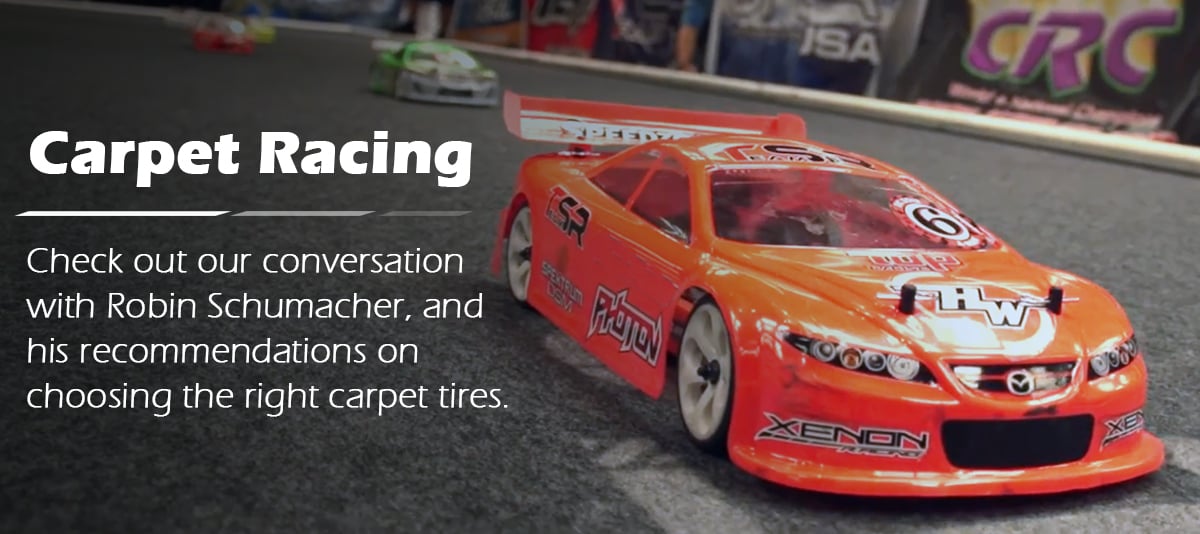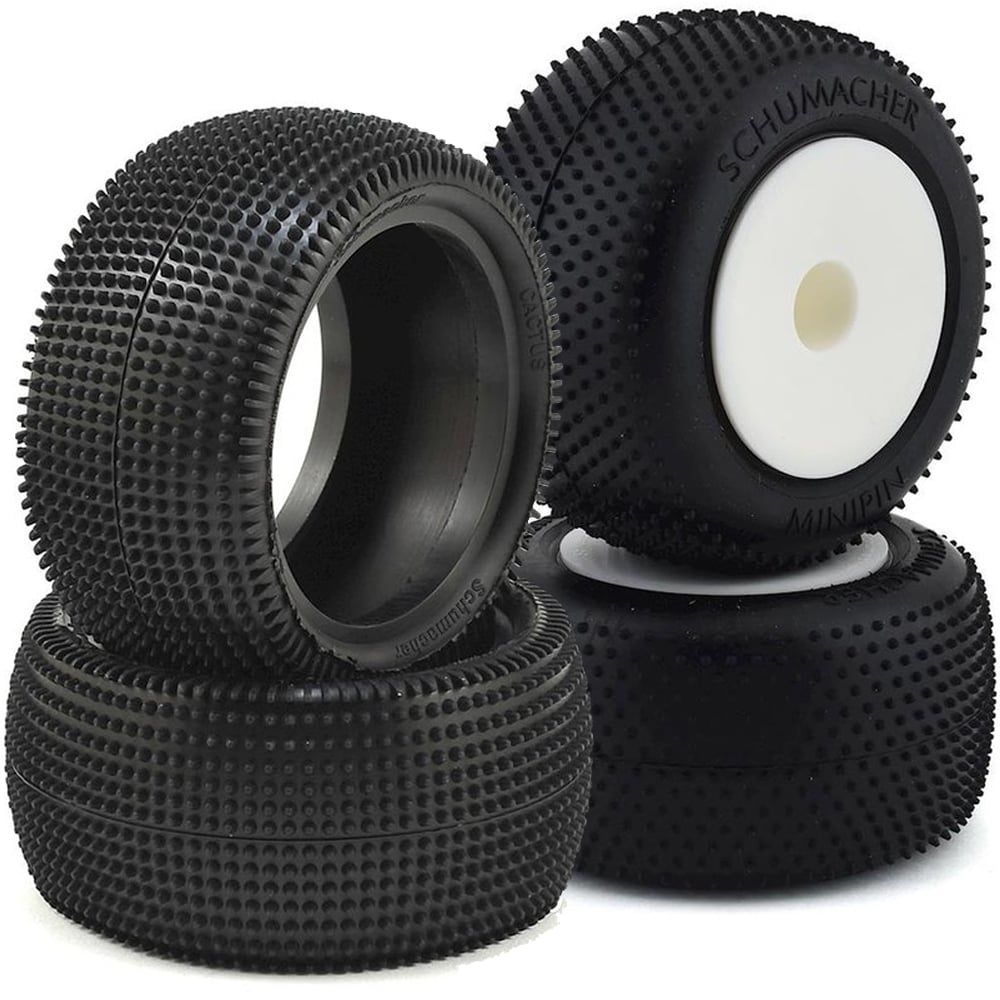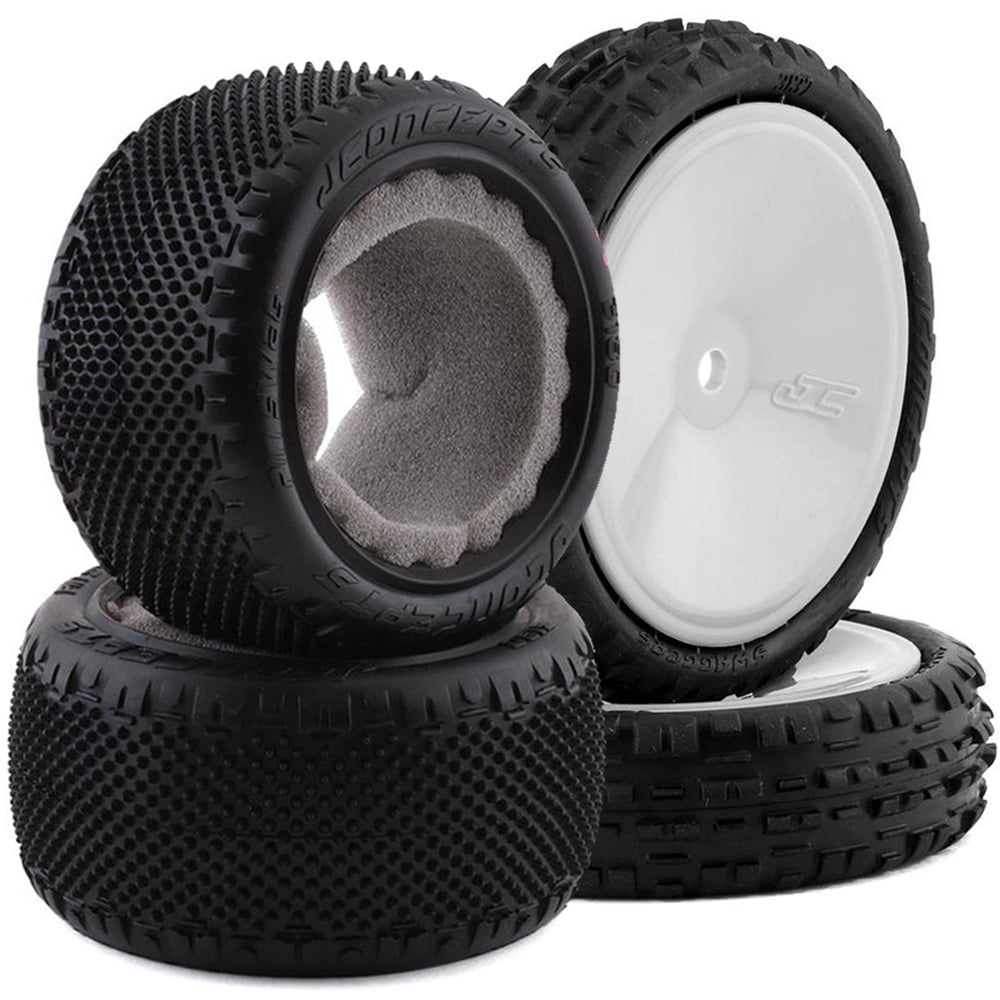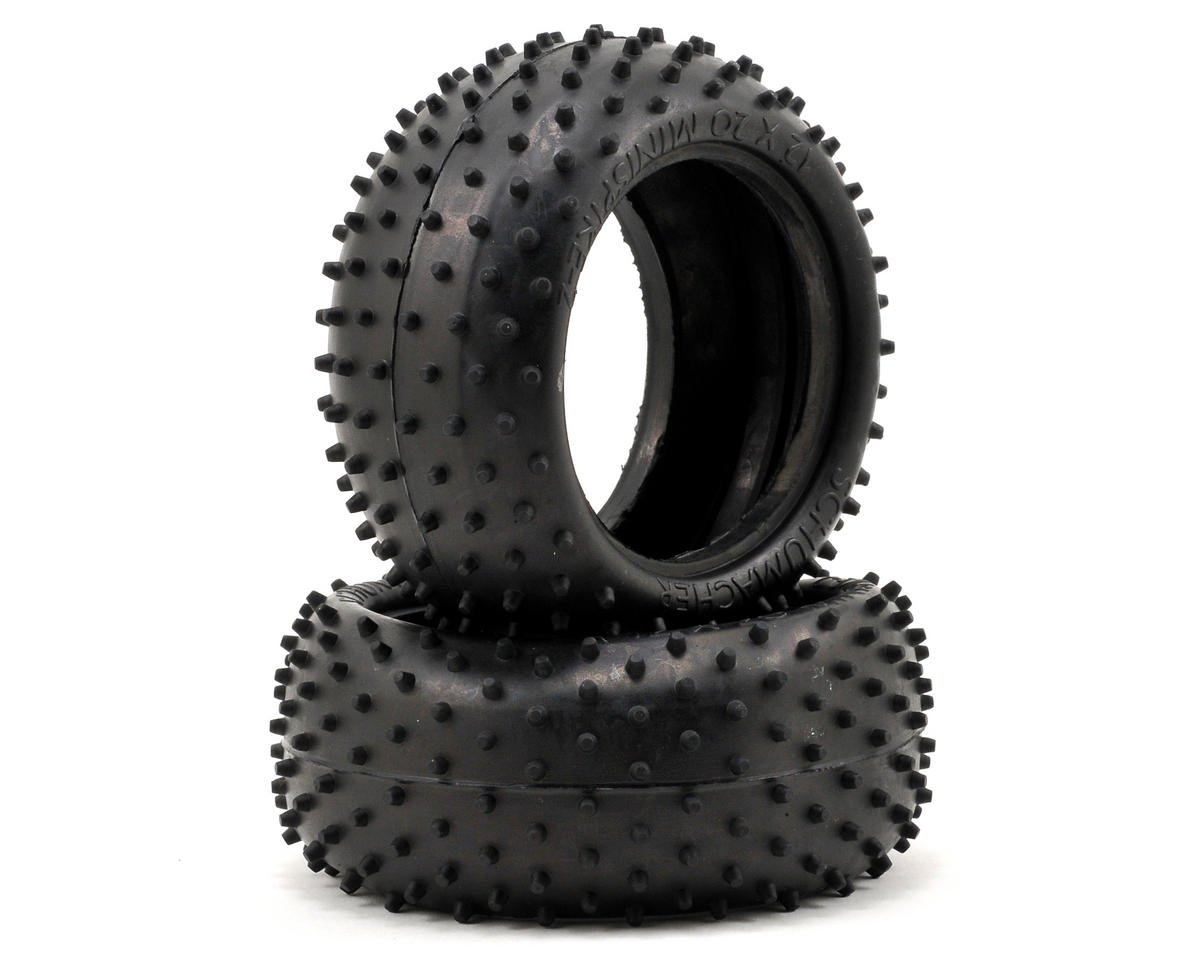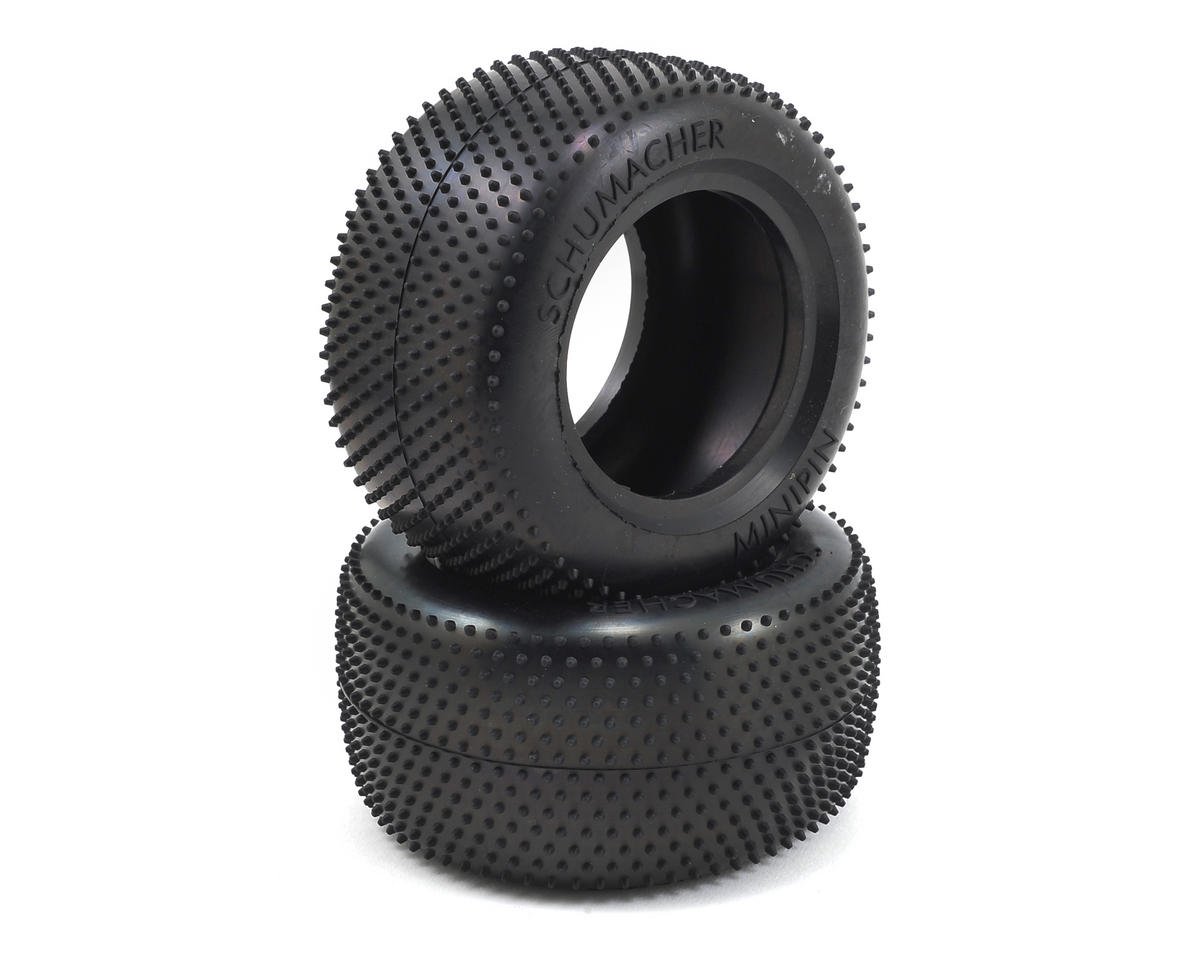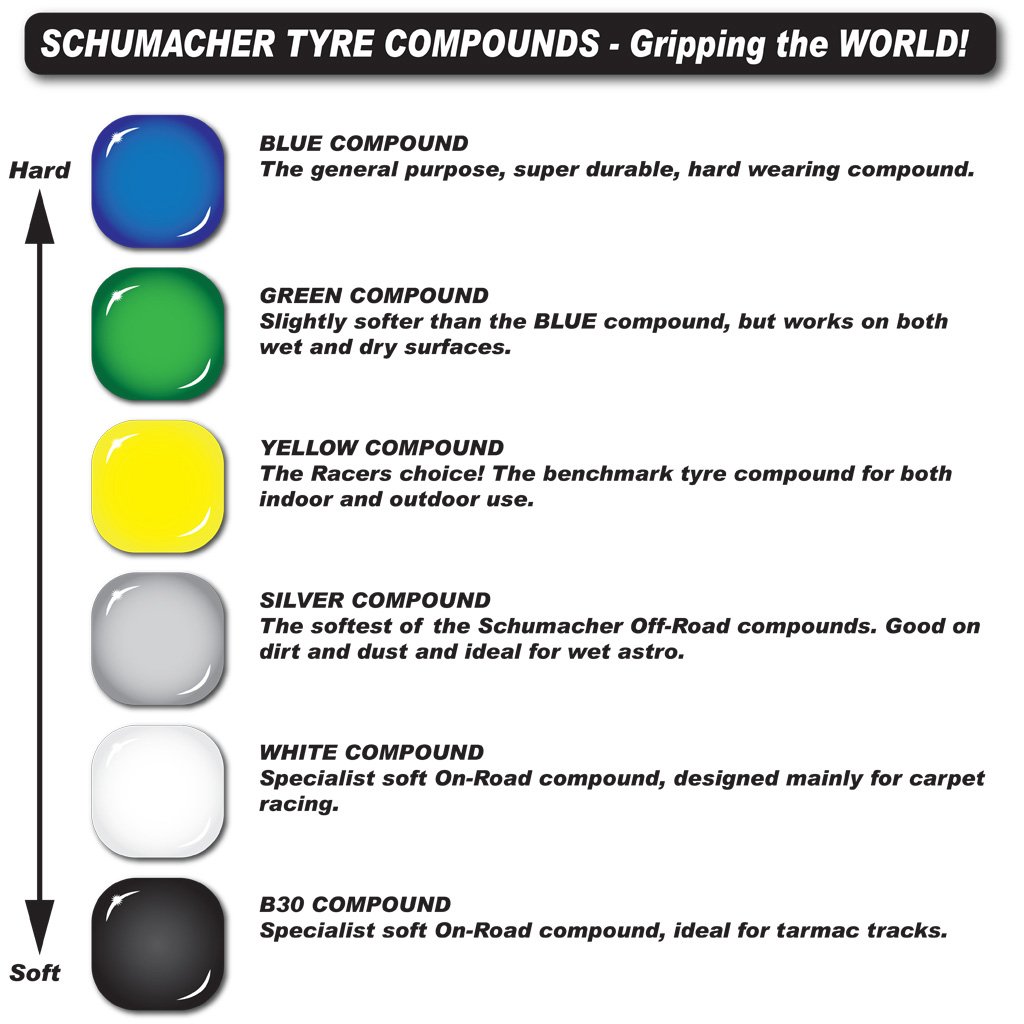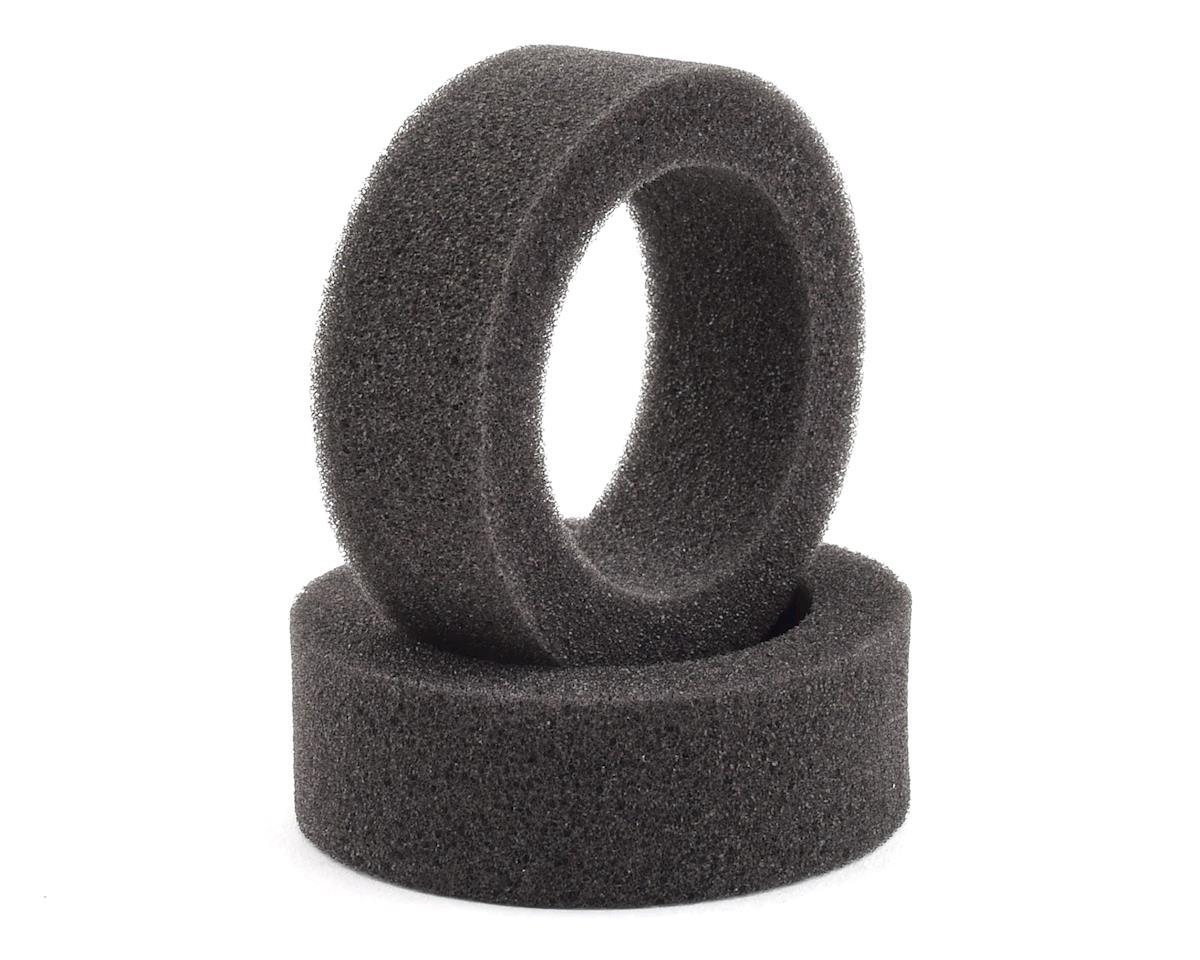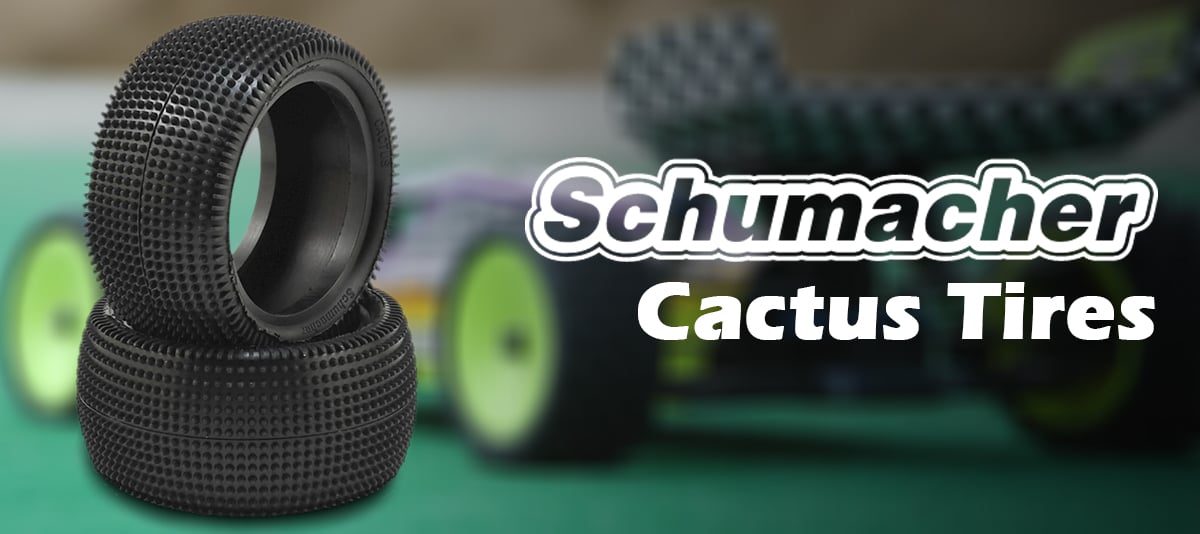Carpet Racing - Selecting the Right RC Carpet Tire
We had the opportunity to catch up with Robin Schumacher, a British manufacturer and very much a pioneer in carpet specific cars and tires (or tyres if you ask Robin). British racers have long enjoyed the higher levels of grip and cleaner, lower maintenance of the cars’ carpet delivers. There is no denying that the same benefits realized in the UK are now being seen in the US. With the rise in popularity, here’s what Robin shared for our customers new to this form of racing.
Indoor carpet racing or outdoor carpet racing - What can you tell us about choosing the right tire for the track’s surface?
Choosing the right tire is probably the most critical part of a carpet car setup to get right. Smooth, clean surfaces require a maximum amount of rubber to contact the track, and as with a clay track, a slick tire will be best. Likewise, when water is present on the surface, treaded tires help move the water out of the way. Generally speaking, some form of spikes or pins will provide you the best performance on carpet or Astroturf, and choosing the right one is dictated by the “pile” of the carpet or turf.
Spikes or Pins?
A longer pile, more shag if you will, requires an adequate spike to dig into the fibers. The Schumacher Minispike has been the most popular Astroturf tire for many years. More recently, tracks are installing shorter pile Astroturf for which a tire with smaller pins would be the choice for most racers. Carpet tires require much shorter spikes, commonly referred to as pins. A pin differs from a spike in the shape and density of the tread. Pins are smaller, more pointed lugs, and have noticeably more pins and points of contact around the tire.
We notice that many carpet tires have a higher profile. Why is that?
A high-profile tire simply rides the bumps better. The sidewall flexes and acts like an additional shock absorber which is important for tracks built on hard surfaces. The downside is that the sidewall will flex as the car changes direction making it less responsive and more prone to traction roll. But just like dirt racing, there is a tire or a setup change for every surface and condition. The latest tracks are relatively smooth, and a low-profile tire’s improved responsiveness and driving feel outweigh the reduced bump handling.
What do you recommend if a racer is experiencing difficulty with traction rolls?
As stated above, very high levels of grip may cause rolling. Again, setup changes, including lowering the center of gravity with a lower ride height, helps, but you may find yourself bottoming out on certain jumps. To fix this with their tires, we used to see drivers trim the outer row of spikes off their fronts to reduce side bite.
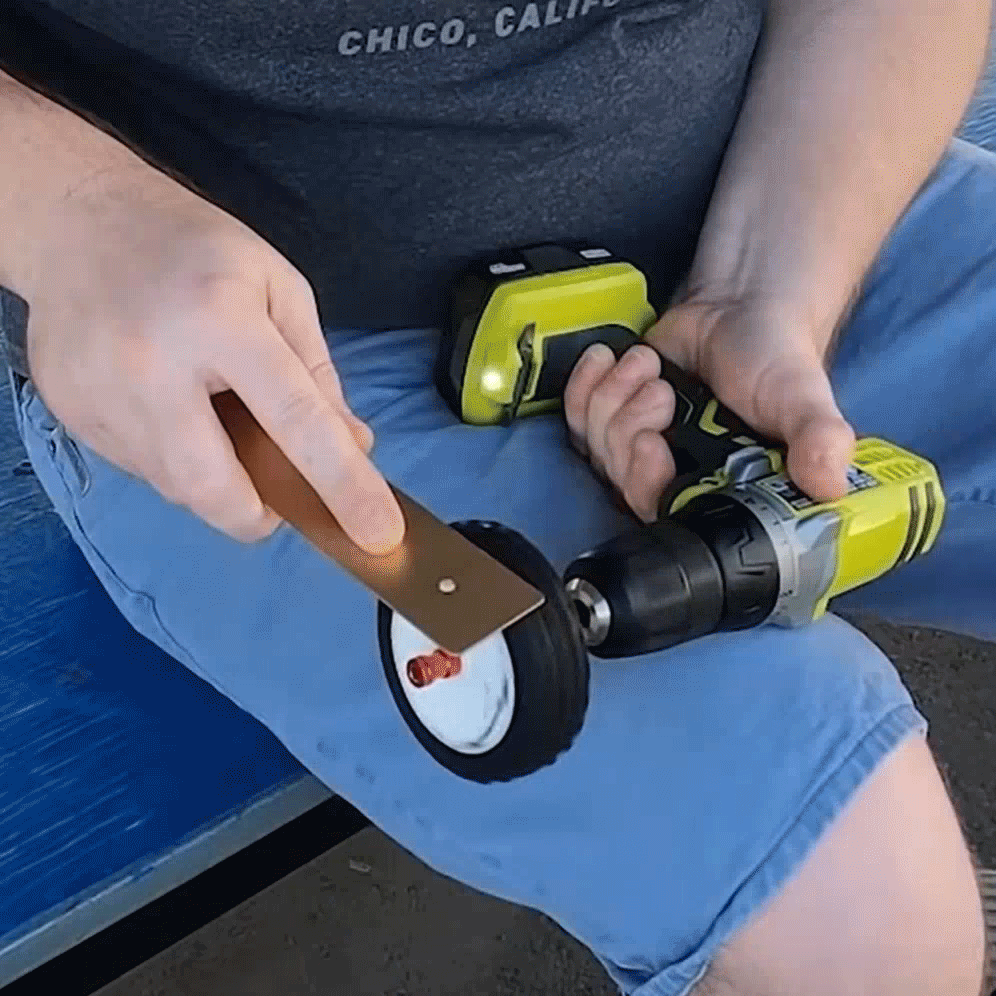
Compounds are a crucial consideration in dirt racing—what about turf and carpet?
Choosing the suitable rubber compound is just as important here but is less specific about the surface itself and more about conditions. Our ‘Yellow’ compound is our medium compound and the most widely used for dry weather racing on Astroturf and carpet. The softer ‘Silver’ compound works well in wet conditions, and the harder ‘Blue’ is a long wear compound.
We notice that you don’t include closed cell inserts as we typically see in the US. Why is that?
Different inserts change the characteristics of the tire. For example, if a spike bends over, the traction is ruined, so carpet and Astro tires are made from relatively firm rubber to give strength and support to the spikes. Since the rubber is firm, the best support for this rubber and tread is a softer, open cell insert. On the contrary, dirt tires are commonly made from a softer rubber and require a firmer insert such as a molded or closed cell insert to support the tire. Schumacher tire inserts sold separately.
Can you tell us more about why you think the Schumacher Cactus will be a popular tire for the upcoming season?
It features a spike size and density optimized for modern carpet racing with a superior balance of grip and long life. The Schumacher Cactus is a hybrid of sorts offering all the best characteristics from the various tires we’ve developed over the years. In addition, we’ve given it a low profile and molded ridges on the edge of the tire to minimize traction roll for better control and feel.

